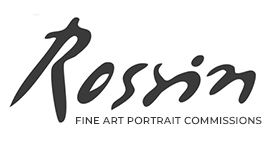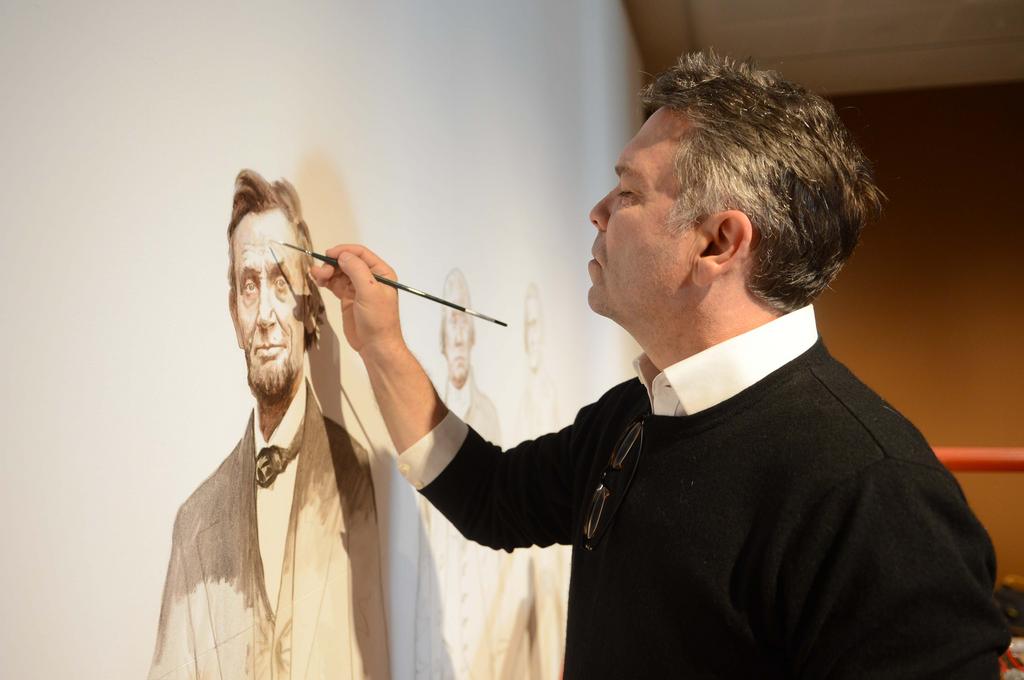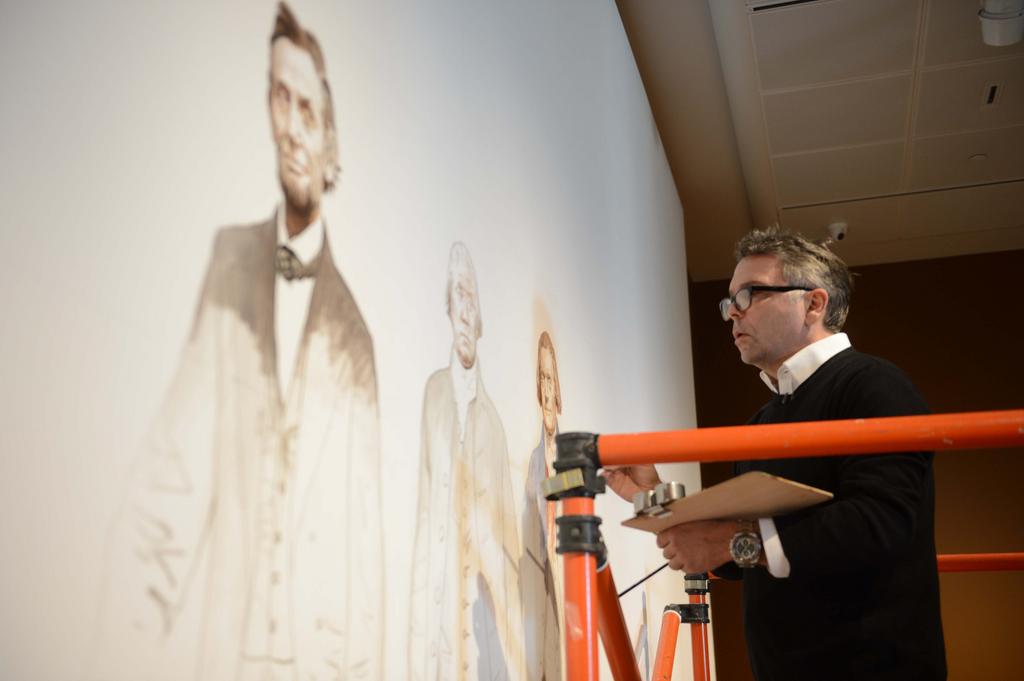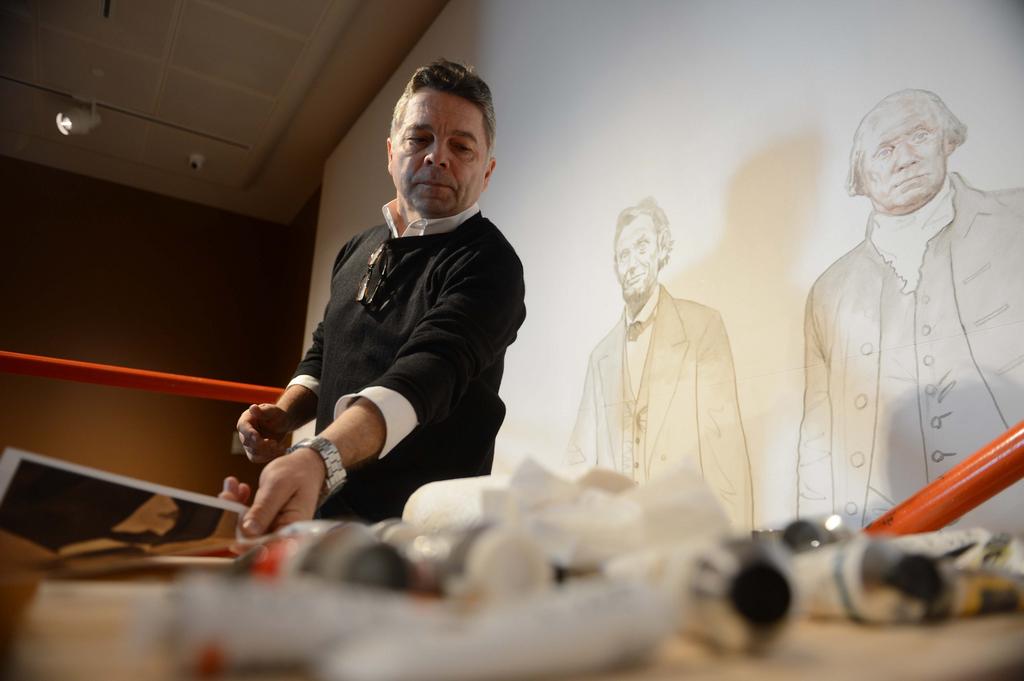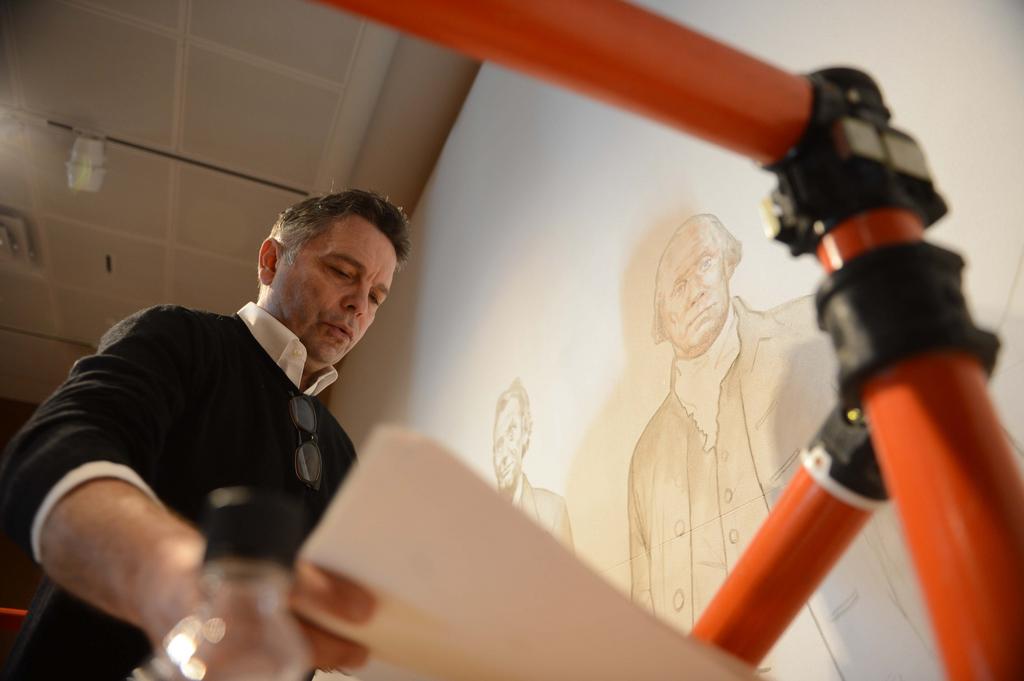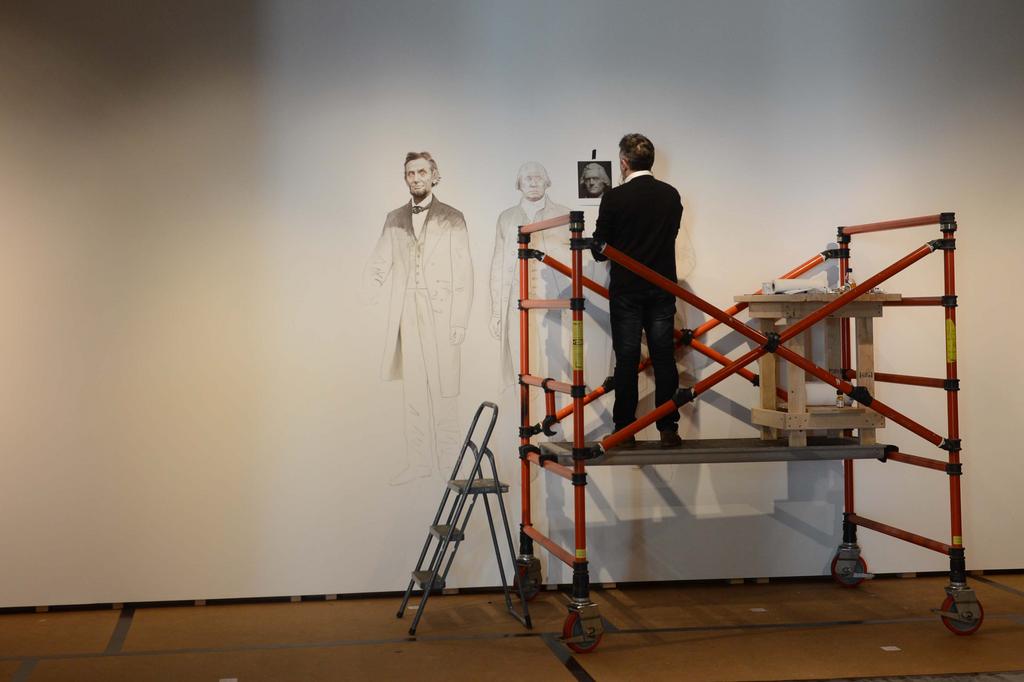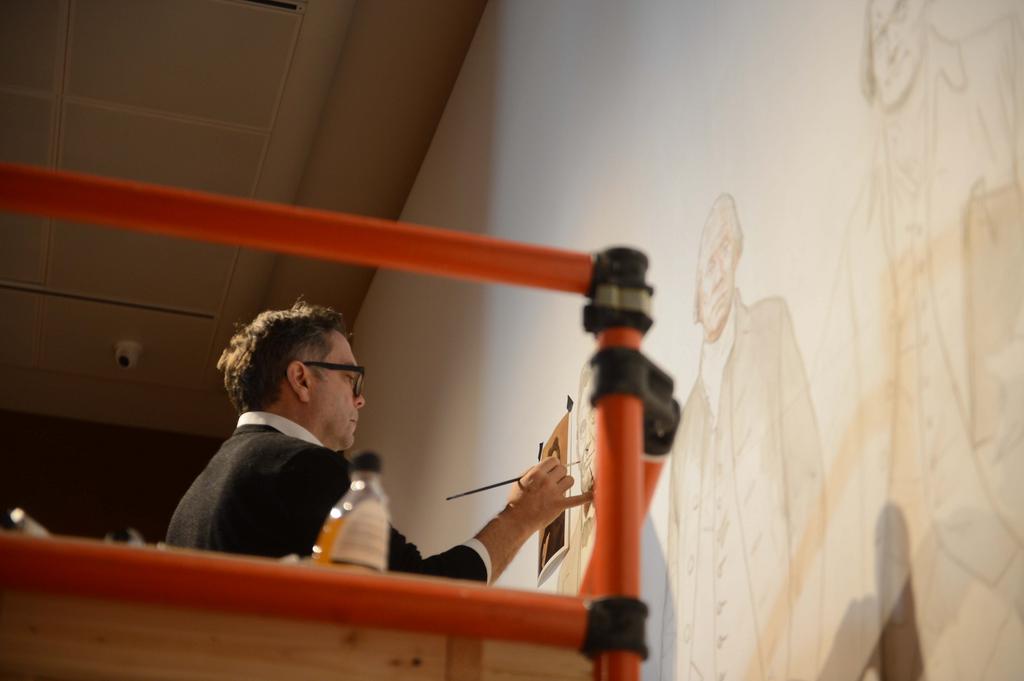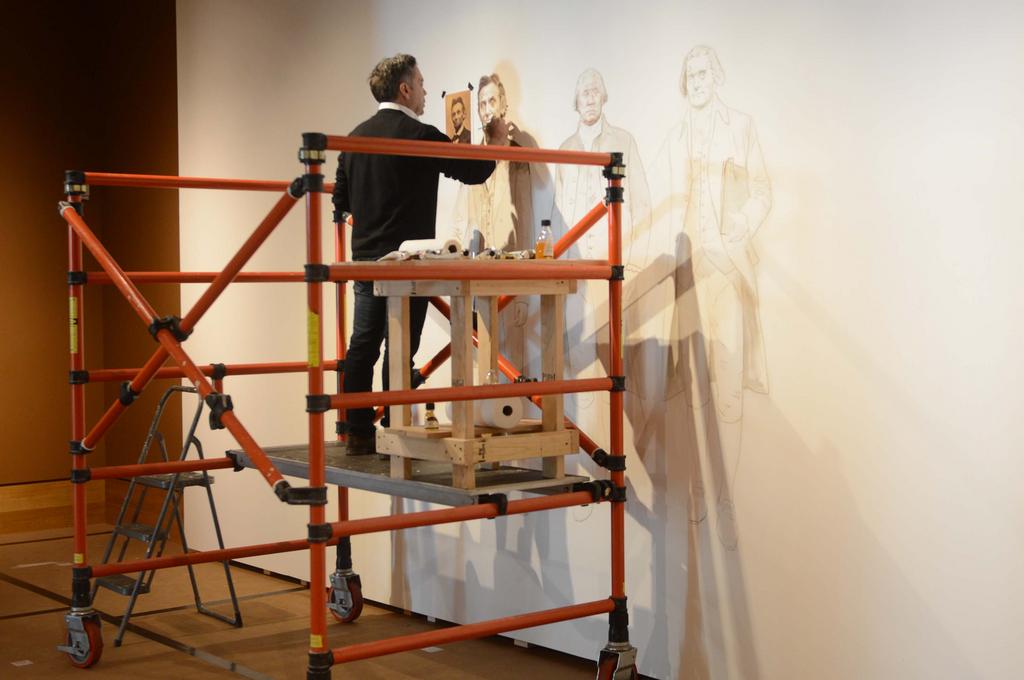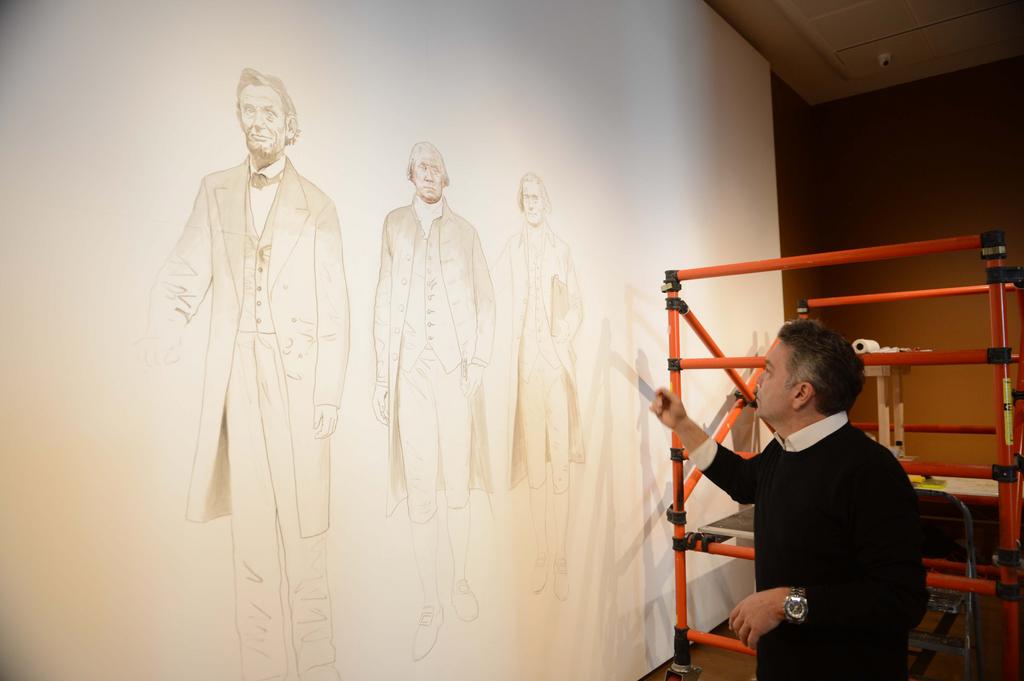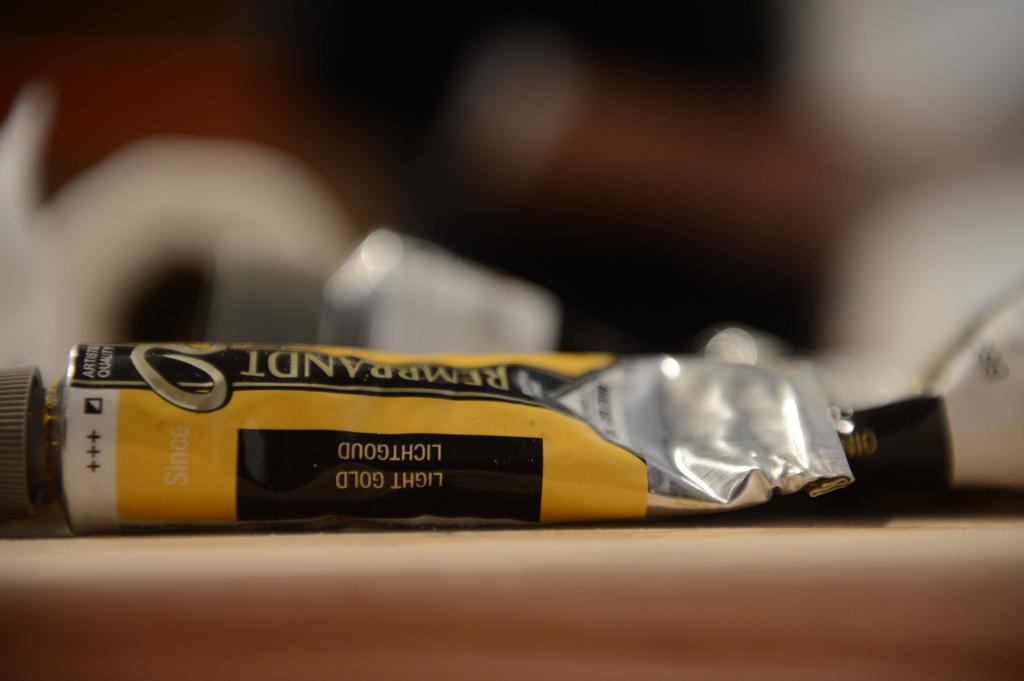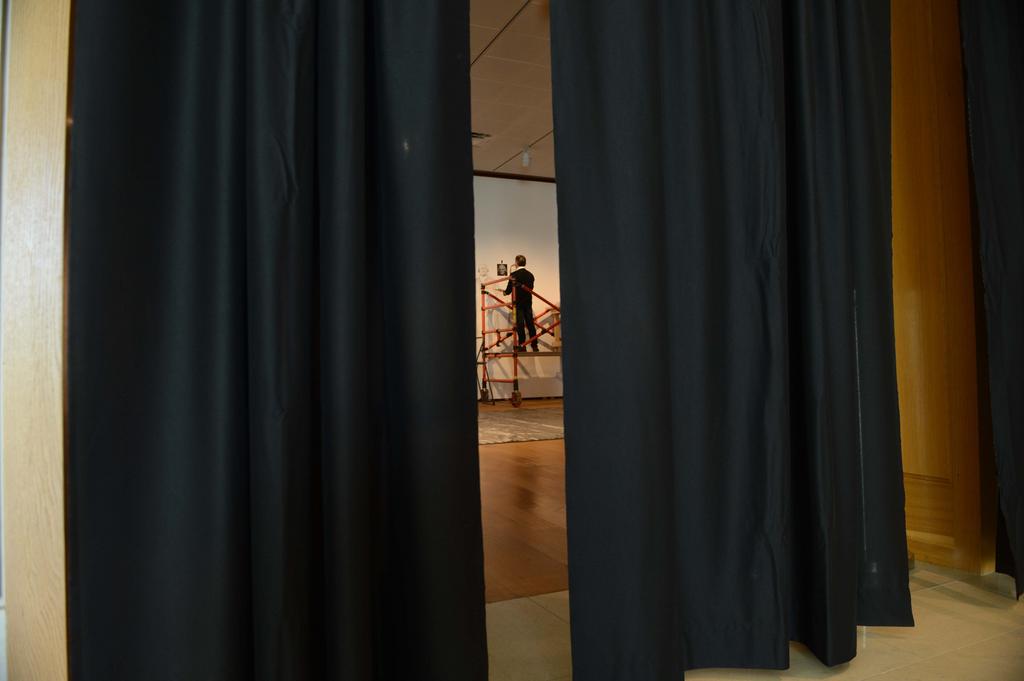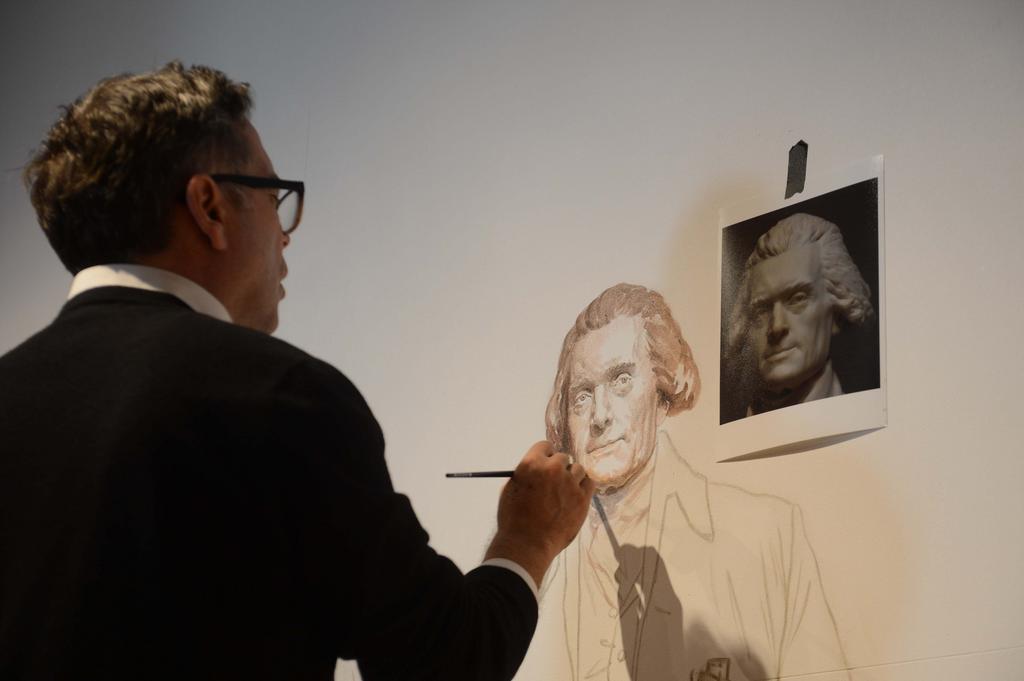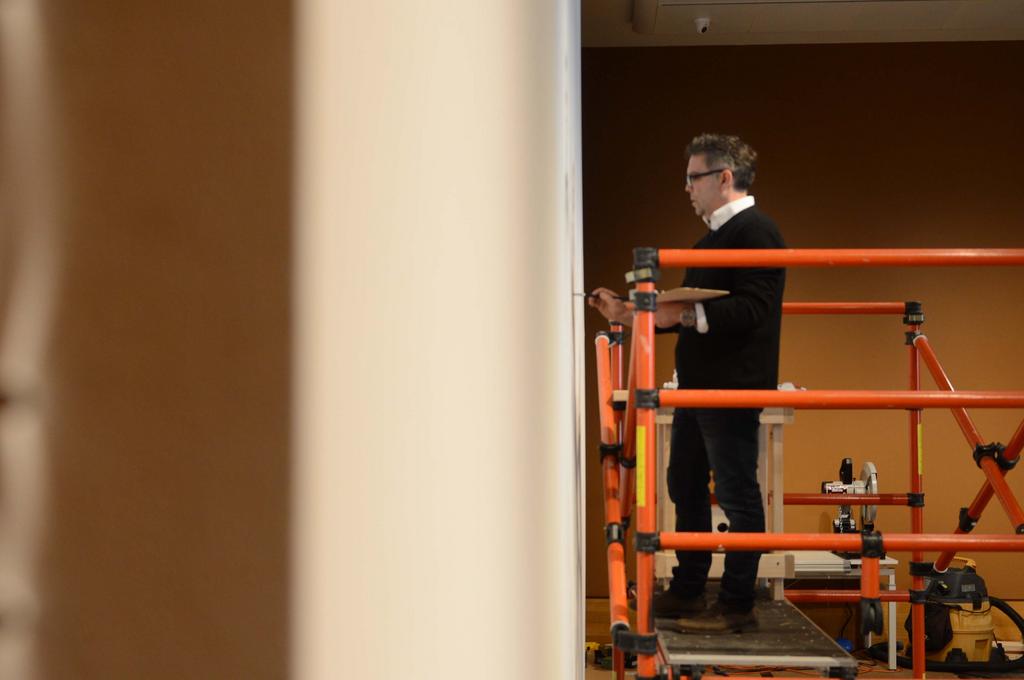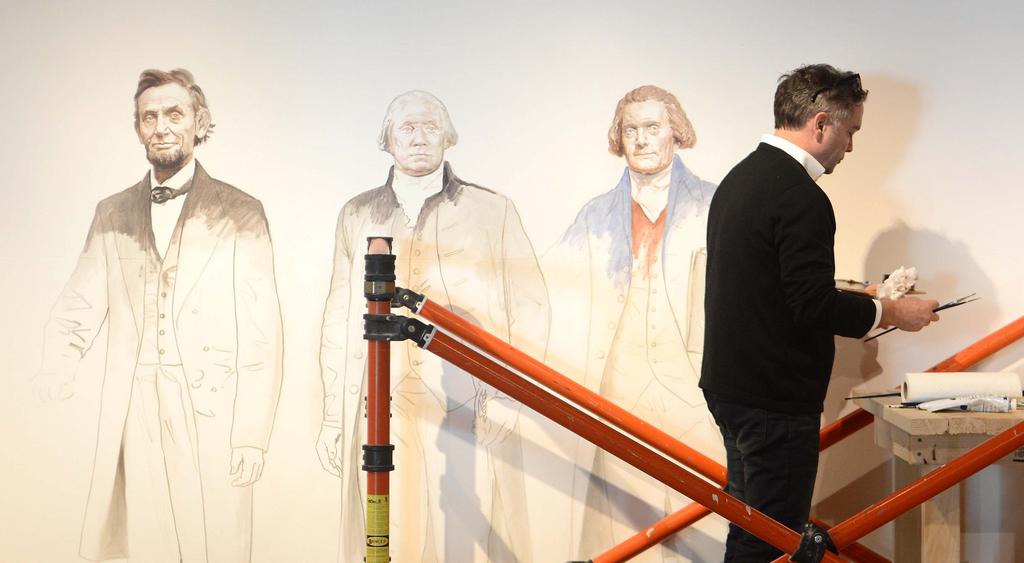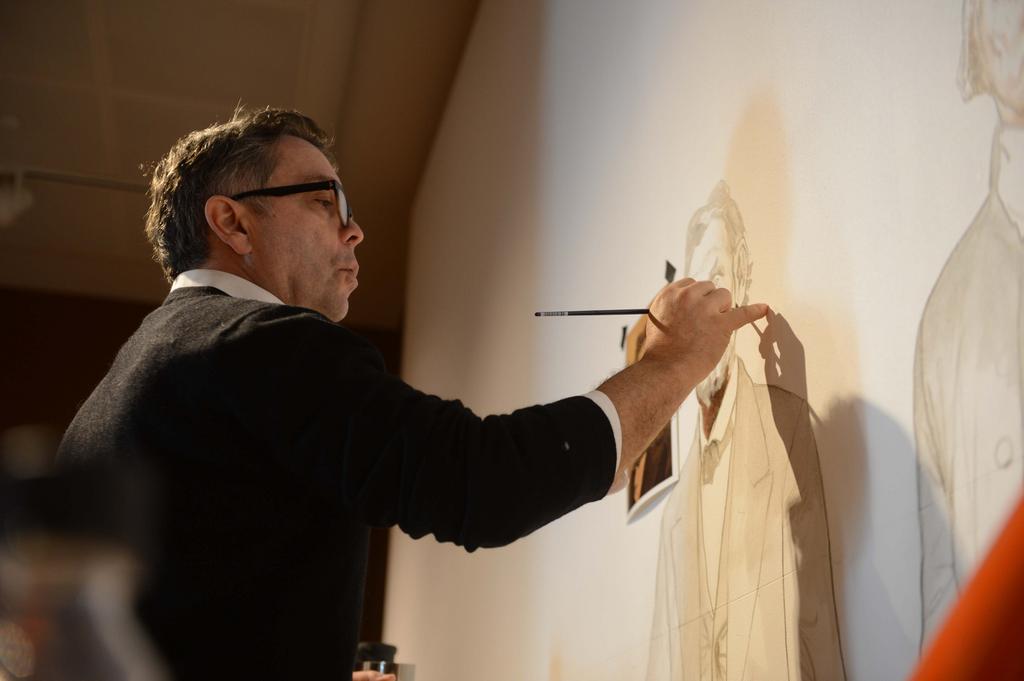Healing through art: New presidential exhibit in Atlanta to share powerful message about PTSD, military veterans
Original article from Atlanta Business Chronicle:
https://www.bizjournals.com/atlanta/news/2018/11/09/healing-through-art-new-presidential-exhibit-in.html
By Alex Gailey, Atlanta Business Chronicle
Nov 9, 2018
Texas businessman and Vietnam veteran Harry Patterson and Ross Rossin, an Atlanta-based artist, are working together to raise awareness about veterans suffering from post-traumatic stress disorder.
The duo is elevating Patterson’s platform, National Veterans Wellness and Healing Center, through Rossin’s artistic skills by creating a 13-foot-tall by 24-foot-wide painting of the 19th century presidents gathered together. He will also paint the 21st century presidents on a separate, smaller canvas, leaving room to draw in and paint future presidents.
Rossin will paint them where Patterson first came across a monumental portrait he did of the 20th century presidents, at the Booth Western Art Museum in Cartersville, Ga.
Rossin, who is known for his large-scale, realist portraits of modern and historical figures, will bring both the 19th century and 21st century presidential paintings to fruition over the next year in front of museum visitors.
“We call them presidents, but they are also commanders-in-chiefs,” said Rossin. “Their policies, flaws and strengths influence the military in this country. For me, as an artist, it’s important for me to capture all their faces.”
The year-long event kicks off the weekend of Veterans Day on Nov. 9, as a way to recognize and commemorate veterans, especially those who suffer from or have suffered from post traumatic stress.
Patterson himself suffered from PTSD after serving in the Vietnam War. It is estimated that about 30 out of every 100 Vietnam veterans have had PTSD in their lifetimes, according to the National Center for PTSD. About 11 to 20 out of every 100 veterans who served in the Iraq War or the War in Afghanistan have PTSD in a given year.
A donation box and brochures for the National Veterans Wellness and Healing Center will be placed nearby the presidential paintings, and 100 percent of the proceeds will go to the non-profit organization based in Angel Fire, N.M.
It’s a non-profit that hosts multiple week-long retreats for veterans and their families, “to focus on emotional and physical healing,” according to its website. Patterson started to get financially involved with the organization in 2011, although it kicked off in 2009. By 2016, he attended his first retreat and said it was life-changing.
“Over time and with the program, you learn to not feel ashamed and accept things that you question,” Patterson said. “‘PTS’ works on you and messes up communication between you and your loved ones. Our program calls it ‘PTS’ and drops the ‘D’ because it doesn’t believe in disorders.”
Rossin will paint mostly during the day, three to four times a week. It will give visitors a chance to see the painting “come alive in front of their eyes,” he said. The pair, along with the museum, are also setting up a live stream YouTube channel, so patrons can tune in anytime to watch Rossin paint.
“All the presidents have never met, but they are meeting in this painting and having this silent dialogue about things,” Rossin said. “They are talking together in time and sharing a common dream as presidents. We’re trying to keep the dream alive.”
The awaited 19th century and 21st century paintings aren’t the first of their kind by Rossin. In 2004, the Bulgarian-American artist completed his famous painting, “A Meeting in Time,” of the 20th century presidents gathered together in the Cross Hall of the White House.
He began painting it when he decided to settle down in the United States in the early 2000s, after spending years traveling around the world for exhibitions and commissions. A new rush of patriotism and the novelty of the United States played a key role in his inspiration for “A Meeting in Time.”
He asked himself, “In what way can I match the turn of the century?” Once complete, he vowed to paint another large-scale presidential portrait, if someone were to ever buy the 20th century presidential portrait.
“Democracy is a work in progress, and the United States has had a peaceful transition of power over many decades,” Rossin said. “You see this in the paintings, but it’s not the case for the rest of the world.”
Rossin anticipates both the new 19th century and 21st century paintings will be complete by winter of 2019.
Remembering America’s history
It was the summer of 2017 when Patterson made his first trip to Cartersville, Georgia, through a history tour bus. Cartersville also happens to be home to the Booth Museum, the largest permanent western art exhibit in the country.
The road trip was a chance for Patterson to enjoy himself and reminisce on older times, like his time spent in Vietnam and the following years spent as a decorated solider in Wichita Falls, T.X., where he became a successful car salesman and eventually bought several car dealerships.
But when he walked up to the second floor of the Booth Museum that one summer day, he couldn’t believe what saw.
Spread across a canvas that spanned from the floor to the ceiling, every president of the 20th century stood there in unity, portraying their strengths, weaknesses and patriotism, in a medium that looked too realistic to not be true.
Seth Hopkins, director of the museum, happened to be giving the tour to Patterson’s group that day. Hopkins mentioned in passing to Patterson the presidential painting was for sale by Rossin.
“When I gave tours, I would sometimes whimsically say that it was a buy one, get one free offer,” Hopkins said. “And one day someone in that group, which turned out to be Harry, came up to me and said he was interested in talking to some people about the painting.”
Within a year after first seeing the immense wall-sized painting, Patterson completed his purchase of it.
“The painting captured me, and I became mesmerized. Then I was told it was for sale,” Patterson said. “It didn’t feel like an accident or a coincidence.”
The Booth Western Art Museum, where all three presidential paintings will reside for the next two to three years, has a history of its own. The 120,000-square-foot museum was founded in 2000 by a local family and opened its doors in 2003. It’s the second largest museum in Georgia and showcases many prominent artists.
In 2009, Hopkins said Rossin loaned his first presidential portrait to the museum on a long-term basis because he felt so moved by the museum’s presidential gallery.
The presidential gallery, which features photographs taken by Yousef Karsh and handwritten letters of all 45 presidents, has been a fixture in the museum from the very beginning, Hopkins said.
“We are excited to be the venue to host Ross and his paintings. The patrons that know about the new project so far have been very excited about it,” Hopkins said. “To be able to watch something of this magnitude and importance come to fruition in front of your eyes is a pretty powerful experience.”
Patterson hopes to bring more awareness to the New Mexico-based veterans organization by taking the paintings on a road trip across the country someday.
“A road trip will take a while to plan and raise money, but my goal is to expand the organization nationally,” Patterson said. “The paintings are a huge step in that direction.”
